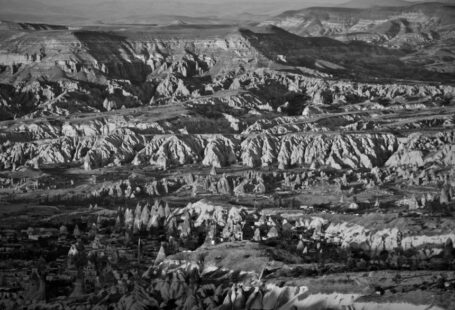Nestled in the heart of Turkey, Cappadocia is a region steeped in history and enchantment. From its otherworldly landscapes to its rich cultural heritage, Cappadocia has captivated visitors for centuries. In this article, we will take a journey through time to explore the various civilizations that have called this place home.
Prehistoric Era: The First Inhabitants
The story of Cappadocia begins in the prehistoric era, around 6000 BC, when the first settlers arrived in the region. These early inhabitants, known as the Hattians, were a Neolithic people who lived in small villages and practiced agriculture. They left behind traces of their existence in the form of cave dwellings and rock-cut tombs, which can still be seen today.
Hittite Empire: A Golden Age
Around 2000 BC, the Hittites, an Indo-European people, established a powerful empire in central Anatolia. Cappadocia, with its strategic location, became an important part of their kingdom. The Hittites built fortresses and temples in the region, leaving behind a lasting legacy. The most famous of these structures is the Hittite rock sanctuary of Yazılıkaya, which features impressive reliefs depicting Hittite deities.
Persian and Hellenistic Periods: New Influences
In the 6th century BC, the Persian Empire conquered Cappadocia, bringing with them a new wave of cultural influences. The Persians introduced Zoroastrianism to the region, and their influence can be seen in the rock-cut tombs and underground cities that were built during this period.
Following the Persian Empire’s decline, Cappadocia came under the rule of Alexander the Great and later the Seleucid Empire. During the Hellenistic period, Greek culture began to flourish in the region. Greek cities, such as Mazaca (modern-day Kayseri), were established, and Greek influence can be seen in the architecture and art of the time.
Roman and Byzantine Empires: A Legacy of Christianity
In 17 AD, Cappadocia became a Roman province and experienced a period of prosperity under Roman rule. The region’s volcanic landscape made it an ideal location for the cultivation of grapes and the production of wine. The Romans built extensive underground cities and cave dwellings, which served as both homes and places of worship.
However, it was during the Byzantine period that Cappadocia truly thrived. The spread of Christianity led to the emergence of monastic communities in the region. Monks and nuns seeking solitude and spiritual enlightenment carved elaborate churches and living quarters out of the soft volcanic rock. The Göreme Open-Air Museum, a UNESCO World Heritage site, is a testament to the extraordinary rock-cut churches and frescoes that were created during this time.
Seljuk and Ottoman Empires: A New Era
In the 11th century, Cappadocia came under the control of the Seljuk Turks, who brought with them a new era of Islamic influence. The Seljuks built impressive caravanserais, which served as rest stops for travelers along the Silk Road. These architectural marvels still stand today and provide a glimpse into the region’s vibrant trading history.
With the decline of the Seljuk Empire, Cappadocia fell under the rule of the Ottoman Empire. During this time, the region saw an influx of Turkish settlers who built charming villages and cultivated the fertile land. The Ottoman influence can be seen in the region’s traditional architecture, with its distinct wooden houses and stone courtyards.
Modern Era: Tourism and Preservation
In recent years, Cappadocia has become a popular tourist destination, attracting visitors from around the world. The unique landscapes, ancient rock formations, and historical sites continue to captivate travelers. Efforts have been made to preserve the region’s cultural heritage, with many of the cave dwellings and rock-cut churches being converted into boutique hotels and museums.
Conclusion: A Tapestry of History
Cappadocia’s timeline of human settlement is a tapestry woven with the threads of various civilizations. From the prehistoric Hattians to the powerful Hittites, from the Greeks and Romans to the Byzantines and Ottomans, each era has left its mark on the region. Today, Cappadocia stands as a testament to the resilience and creativity of the people who have called it home throughout the ages. As visitors wander through the ancient cave cities and gaze upon the breathtaking landscapes, they are reminded of the enduring legacy of Cappadocia’s rich history.





